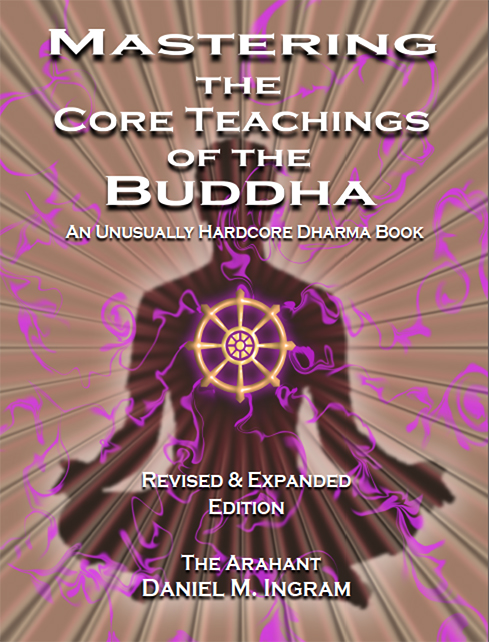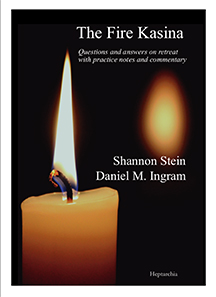The Immortality Models
← The Three Kayas | The Transcendence Models →
The immortality models are significantly more prevalent in Tibetan Buddhism than in the other strains, though they also appear in Pure Land Buddhism and elsewhere. While all strains of Buddhism on the one hand categorically deny immortality as the goal—based upon the standard tenets of Theravadin logic—most of then turn around and sell immortality like used car salesmen. So many Buddhists want to be up in the Heaven called Nirvana, as empty yet separate beings who don’t exist and yet live forever as bodhisattvas saving the world. That they can hold this profound set of contradictions in their fuzzy little brains with such uninquisitive ease is truly award-worthy.
While there are many excellent points in the bodhisattva vows, this is yet another case of bait-and-switch where the results will be a bit more down-to-earth than most people are bargaining for, and where people don’t bother to read the fine print they were told to read. However, many Buddhists who don’t understand emptiness viscerally for themselves become so brainwashed into the ideal of becoming amazing superheroes that they readily give up the notion that they could really understand anything in this lifetime in exchange for the dream that some zillion lifetimes down the road they may get to be spiritual superstars. However, as their mentality can be essentially like people who have bought into some weird cult, I don’t recommend trying to convince them otherwise, as it generally just pisses them off, as whole massive concrete spiritual identities can be created just by buying into that beautiful dream. Just do your practice, take care of your own understanding, awaken, and then see what you can do from there.
Now, as before, there is some weird and slippery truth to the immortality models on two fronts. First, from a technical point of view, what is traditionally called “the deathless”, ”nirvana”, “tao”, “void”, “Buddha nature”, etc., is often referred to as indestructible, timeless, etc. This is because it is referring to either: a) that non-experience of Fruition, which is like a gap in the space-time continuum, which is indestructible only because it can’t be experienced and thus falls outside the ordinary laws of causality, which is obviously a totally unsatisfying thing to build a sense of immortality on; or, b) some universal luminous aspect of utterly transient phenomena and thus not to anything specific or permanent in any conventional sense. This second option means that it is always true that sensations arise and vanish utterly, and always true that they contain within them their own transient awareness, which again is a totally unsatisfying foundation upon which to build a model of stability or immortality. Regardless of which unsatisfying one is implied, it is usually not immediately clear by context which meaning is being sold.
The flip side of this, that of the ordinary, transient world, is that the mechanism of causality rings on indefinitely. This is an interesting and practical, insight-oriented way to look at things. Further, the past is gone, the future hasn’t arisen, and the present is transient, so where can time truly be found in all of that, and where in that utter ephemerality can we find something stable enough to say it has truly died or could be destroyed?
From the perspective of time and cause and effect, things ripple out into the universe like drops of water cause ripples in a lake. This process, the world and us, has always been empty. If we are anything, it is a pattern of discontinuous rippling sensations arising from causes and effects and leading to causes and effects. Thus, “we” send ripples of whatever and however we are into the causal future. If we are awakened, that is one aspect of what ripples out into the patterns we call time, and these ripples go on without definable end. Teachings of rebirth are getting at this point in their somewhat problematic way.
Thus, we see that there is something to the immortality models, but they are not very helpful for doing insight practices except to produce in us an appreciation of causality (which is no small thing), and appreciating causality directly is extremely important in a moment-to-moment way. That said, I think that the immortality models are much more useful for training in morality, despite their obvious paradigmatic problems, as they can motivate people to behave just as do the basic Christian teachings of Heaven and Hell (which also exist in the Tibetan Buddhist “stages of the path” or Lamrim teachings, but which define Heaven and Hell not as places but as states of mind).
One great traditional analogy goes as follows: if you lit a candle, then lit another candle with that candle, and then blew out the first one, what is transmitted? This is causality without a permanent entity, resonance without continuity, an artificial but useful recognition of a pattern, and nothing more. Ask a physicist what information is and you hopefully will get an answer that gets at this basic point.

